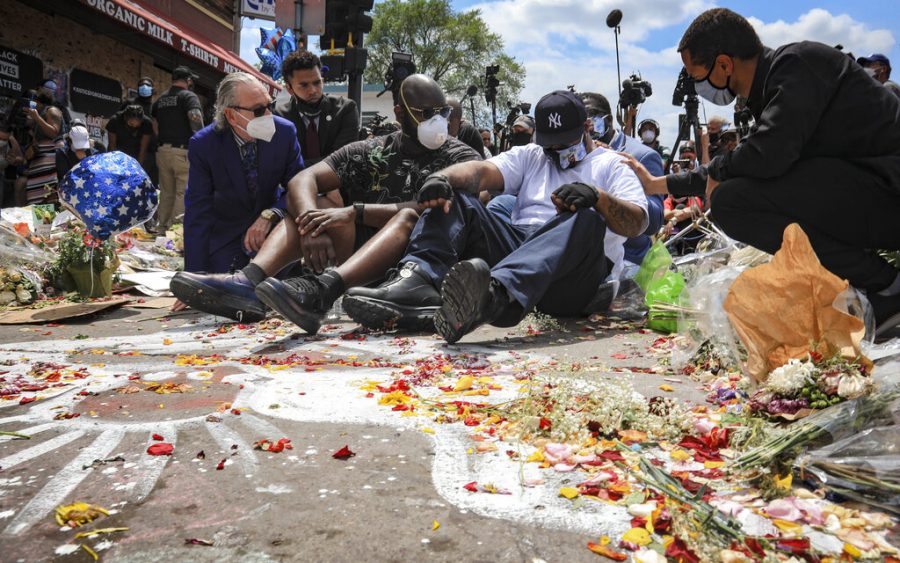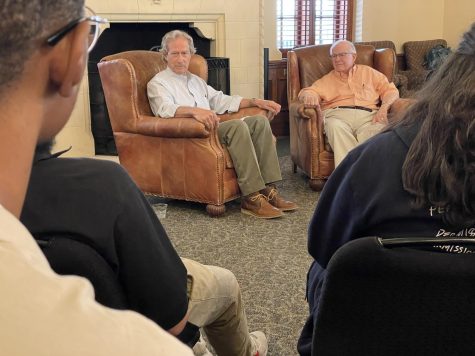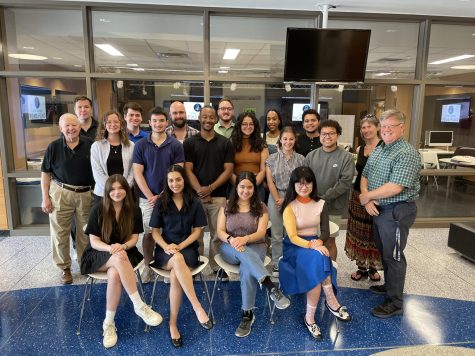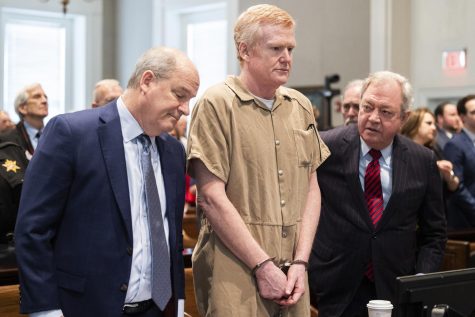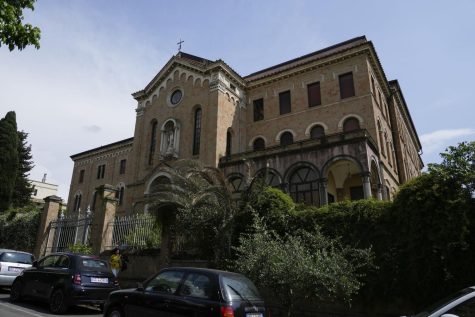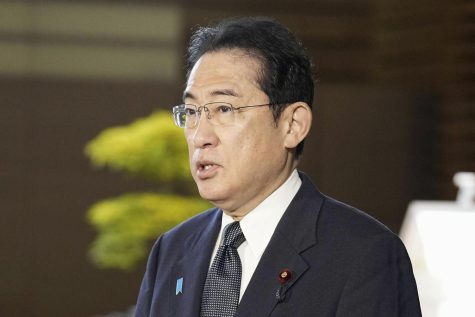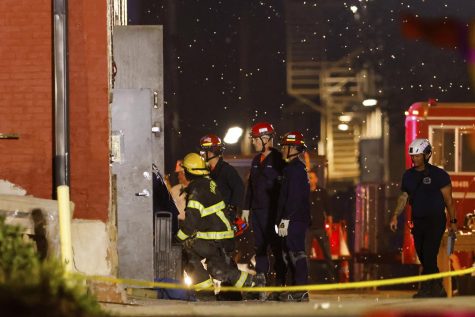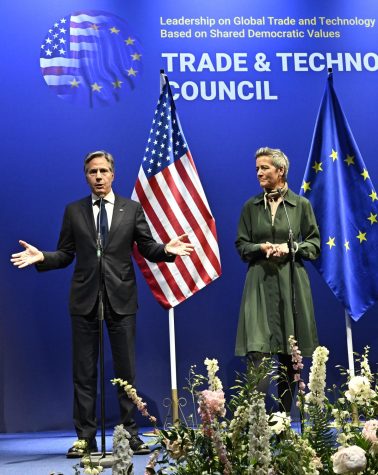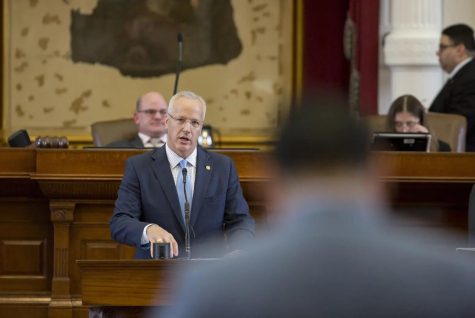Independent autopsy says Floyd died of asphyxiation
BEBETO MATTHEWS/Associated Press
An emotional Terrence Floyd, second from right, is comforted as he sits at the intersection of 38th Street and Chicago Avenue, Minneapolis, Minnesota, on June 1. His brother George Floyd died in police custody at the intersection.
June 1, 2020
MINNEAPOLIS — An autopsy commissioned for George Floyd’s family found that he died of asphyxiation due to neck and back compression when a Minneapolis police officer held his knee on Floyd’s neck for several minutes and ignored his cries of distress, the family’s attorneys said Monday.
The autopsy by a doctor who also examined Eric Garner’s body found the compression cut off blood to Floyd’s brain, and weight on his back made it hard to breathe, attorney Ben Crump said. He called for the third-degree murder charge against Officer Derek Chauvin to be upgraded to first-degree murder and for three other officers to be charged.
We are a country that is holding out for the promise of justice for all.
— Sam Page, St. Louis County executive
The family’s autopsy differs from the official autopsy as described in a criminal complaint against the officer. That autopsy included the effects of being restrained, along with underlying health issues and potential intoxicants in Floyd’s system, but also said it found nothing “to support a diagnosis of traumatic asphyxia or strangulation.”
Floyd, a black man who was in handcuffs at the time, died after Chauvin, who is white, ignored bystander shouts to get off him and Floyd’s cries that he couldn’t breathe. His death, captured on citizen video, has sparked days of protests in Minneapolis and other U.S. cities and in foreign countries..
The official autopsy last week provided no other details about intoxicants, and toxicology results can take weeks. In the 911 call that drew police, the caller described the man suspected of paying with counterfeit money as “awfully drunk and he’s not in control of himself.”
Crump said last week that he was commissioning the family’s own autopsy. Floyd’s family, like the families of other black men killed by police, wanted an independent look because they didn’t trust local authorities to produce an unbiased autopsy.
The family’s autopsy was conducted by Michael Baden and Allecia Wilson. Baden is the former chief medical examiner of New York City, who was hired to conduct an autopsy of Eric Garner, a black man who died in 2014 after New York police placed him in a chokehold and he pleaded that he could not breathe.
Baden also conducted an independent autopsy of Michael Brown, 18, who was shot by police in Ferguson, Missouri. He said Brown’s autopsy, requested by the teen’s family, didn’t reveal signs of a struggle, casting doubt on a claim by police that a struggle between Brown and the officer led to the shooting.
Chauvin, who was also charged with manslaughter, is being held in a state prison. The other three officers on scene, like Chauvin, were fired the day after the incident but have not been charged.
President Donald Trump berated most of the nation’s governors as “weak” for not cracking down harder on the lawlessness that has convulsed cities from coast to coast.
Meanwhile in Minneapolis, Floyd’s brother, Terrence, made an emotional plea for peace at the site where Floyd was pinned to the pavement by an officer who put his knee on the handcuffed black’s man neck for several minutes. The gathering was part rally and part impromptu eulogy as Terrence Floyd urged people to stop the violence and use their power at the ballot box.
“Let’s switch it up, y’all. Let’s switch it up. Do this peacefully, please,” Terrence Floyd said.
The crowd chanted, “What’s his name? George Floyd!” and “One down, three to go!” in reference to the four officers involved in Floyd’s arrest.
“We are a country that is scared,” said Sam Page, county executive in St. Louis County, Missouri, where the city of Ferguson has been synonymous with the Black Lives Matter movement since the 2014 death of Michael Brown, a black 18-year-old, during a confrontation with a white officer. “We are a country that is angry. And we are a country that is holding out for the promise of justice for all.”
The country has been beset by angry demonstrations for the past week in some of the most widespread racial unrest in the U.S. since the 1960s. Spurred in part by Floyd’s death, protesters have taken to the streets to decry the killings of black people by police.
While most of the demonstrations have been peaceful, others have descended into violence, leaving neighborhoods in shambles, stores ransacked and cars burned, despite curfews around the country and the deployment of thousands of National Guard members in at least 15 states.
Trump told the nation’s governors in a video conference that they “look like fools” for not deploying even more National Guard members. “Most of you are weak,” he said.
He added: “You’ve got to arrest people, you have to track people, you have to put them in jail for 10 years and you’ll never see this stuff again.”
While police in some places tried to calm tensions by kneeling or marching in solidarity, officers elsewhere were accused of treating protesters with the same kind of heavy-handed tactics that contributed to the unrest in the first place. Cities struggled to keep police in line.


